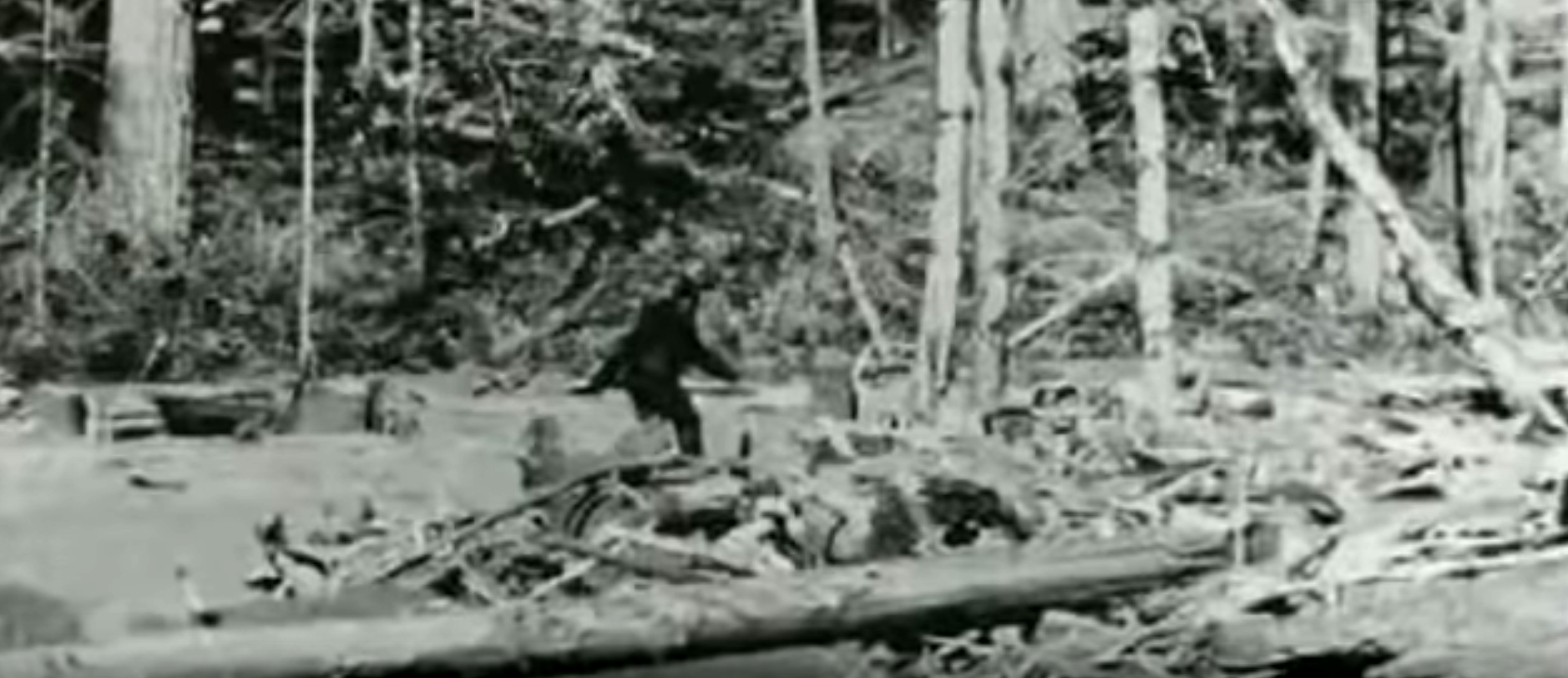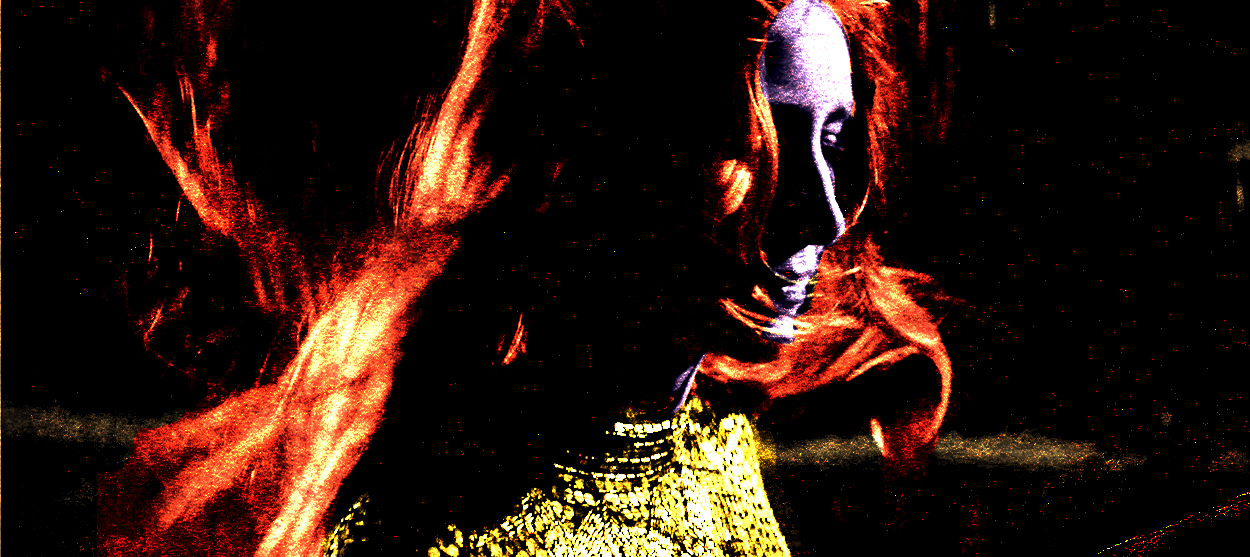The enduring legend of Bigfoot
Sixty years ago, a California logger found a set of enormous footprints — and a star was born

Sixty years ago, a California logger found a set of enormous footprints — and a star was born. Here's everything you need to know:
How did Bigfoot get its name?
On Aug. 27, 1958, a bulldozer operator for a Northern California logging company made a discovery. Jerry Crew was clearing away brush and stumps near Bluff Creek, about 300 miles north of San Francisco, when he found enormous, manlike footprints in the mud. Shocked, he relayed the news — and discovered his colleagues had also spotted mammoth tracks several times. News of their sighting was published in the local Humboldt Times. "Giant footprints puzzle residents along Trinity River," read the Oct. 5, 1958 story, which contained the first recorded use of the name "Bigfoot." The Sunday story went out over the newswires, and "on Monday, Tuesday, and for the rest of many days," Humboldt Times columnist Andrew Genzoli said, "we had reporters from all the wire services pounding on our doors."
The Week
Escape your echo chamber. Get the facts behind the news, plus analysis from multiple perspectives.

Sign up for The Week's Free Newsletters
From our morning news briefing to a weekly Good News Newsletter, get the best of The Week delivered directly to your inbox.
From our morning news briefing to a weekly Good News Newsletter, get the best of The Week delivered directly to your inbox.
Was the story true?
No. After Crew's co-worker Ray Wallace died at 84 in 2002, his children revealed a secret Wallace had concealed for decades: He'd made the prints by stomping in the mud with carved wooden feet. It was all "just a joke," they said. News of Wallace's hoax, however, barely registered with Bigfoot believers. Today, "interest in the existence of the creature is at an all-time high," said paleontologist Darren Naish. In May, thousands of believers will attend one of the largest-ever Bigfoot conferences, in Ohio, where, organizers say, "speakers from across the Bigfoot community ... share their experiences and knowledge in the subject of Sasquatch."
Is Bigfoot a purely American phenomenon?
Sightings of a similar half-man, half-ape have been reported by people all over the world. Indigenous tribes of British Columbia called the creature "Sesquac" — meaning "wild man" — and the term was later anglicized to Sasquatch. The Chinese believe a "Yeren" roams the western Hubei mountains. Australians say a "Yowie" stalks the Outback. When Alexander the Great conquered the Indus Valley in 326 B.C., he demanded the vanquished population bring him a Himalayan yeti. By any name, this mythical creature is usually described as a bipedal hominid sporting a shaggy coat of hair covering its 8-to-12-foot-tall frame (although sightings of "juveniles" also occur). The brute can weigh 800 pounds and leave footprints twice the size of a normal human adult's. Bigfoot believers contend the creature is the proverbial "missing link" between man and his evolutionary forbears.
A free daily email with the biggest news stories of the day – and the best features from TheWeek.com
Have there been other hoaxes?
Bigfoot's legend seems fertile terrain for rogues and raconteurs. In 1957, a prospector named Albert Ostman came forward with a tale of having been abducted in 1924 by a Sasquatch — and forced to live with its family for six days, until he escaped. In 2008, two Georgia men, one a former policeman, claimed to have recovered a Bigfoot corpse in their native mountains — but after an international media frenzy, it was discovered they had purchased a Bigfoot costume and stuffed it with roadkill and animal entrails. But the most famous suspected hoax came just nine years after Wallace's 1958 prank. In 1967, Roger Patterson and Bob Gimlin made a 59-second film showing an ape-like creature walking around near the same Bluff Creek of the original sighting. Years later, costume manufacturer Philip Morris said he sold Patterson the gorilla suit seen in the film, and introduced a large man who said he tromped around in the costume for the camera.
How frequent are sightings?
In America, the Bigfoot Field Researchers Organization (BFRO) lists more than 5,000 sightings from every state except Hawaii, with about one-third coming from the Pacific Northwest. In January, hikers in Provo, Utah, spotted a massive, dark figure moving slowly along a mountainside. "Seriously, look how big it is!" cries hiker Austin Craig on a video posted to YouTube. Real or not, the country's love affair with the monster is indisputable. The last two years brought two children's films: The Son of Bigfoot and Smallfoot. Animal Planet just concluded an 11-season run of Finding Bigfoot, which never quite lived up to its name.
What do scientists think?
Scientifically speaking, there is not a single iota of evidence showing that Bigfoot is real. "Nothing, nothing at all," said Mark Wilson, a natural sciences professor who has studied the sightings. No bodies, no bones, no hair, no skin, no DNA. A 2009 study proposed a theory about what eyewitnesses are seeing. Researchers plotted Bigfoot sightings and found they corresponded roughly to the American black bear's habitat. Black bears can look frightfully tall and human-like, the authors noted, when standing upright on two legs. Other scientists point out the unlikelihood that a species populous enough to breed could evade all attempts to find it. "It defies all logic," said anthropologist Phillips Stevens Jr. Nonetheless, the legend persists. Famed anthropologist Jane Goodall has heard indigenous people on several continents describe sightings of Bigfoot-like creatures. "Well, you will be amazed when I tell you that I'm sure that they exist," Goodall said. "I guess I'm romantic. I don't want to disbelieve."
Why people want Bigfoot to be real
Nature writer Robert Michael Pyle studied Bigfoot enthusiasts — and concluded their obsession gives them a good excuse to spend time in remote, wooded areas. "These guys don't want to find Bigfoot — they want to be Bigfoot!" he wrote. Others frame Bigfoot as a symbol of freedom from the modern world — a simple creature who is free of civilization's rules and boundaries. It's comforting to believe another hominid evolved without "the cruelty, greed, vanity, and other ‘childishness'" of Homo sapiens, says naturalist David Rains Wallace, who has studied Bigfoot lore. Folklore professor Lynne McNeill says Bigfoot satisfies a deep human hunger for the mysterious and the magical, and serves as proof that humans have not totally dominated nature. "It's a better world if Bigfoot can be real," McNeill says. "It says something positive about our retention of wilderness spaces. It says something positive about the fact that we maybe aren't utterly destroying the planet we live on if a species can remain hidden and undiscovered."
-
 The 8 best drama movies of 2025
The 8 best drama movies of 2025the week recommends Nuclear war, dictatorship and the summer of 2020 highlight the most important and memorable films of 2025
-
 Why, really, is Trump going after Venezuela?
Why, really, is Trump going after Venezuela?Talking Points It might be oil, rare minerals or Putin
-
 Israel approves new West Bank settlements
Israel approves new West Bank settlementsSpeed Read The ‘Israeli onslaught has all but vanquished a free Palestinian existence in the West Bank’
-
 Walter Isaacson's 'Elon Musk' can 'scarcely contain its subject'
Walter Isaacson's 'Elon Musk' can 'scarcely contain its subject'The latest biography on the elusive tech mogul is causing a stir among critics
-
 Welcome to the new TheWeek.com!
Welcome to the new TheWeek.com!The Explainer Please allow us to reintroduce ourselves
-
 The Oscars finale was a heartless disaster
The Oscars finale was a heartless disasterThe Explainer A calculated attempt at emotional manipulation goes very wrong
-
 Most awkward awards show ever?
Most awkward awards show ever?The Explainer The best, worst, and most shocking moments from a chaotic Golden Globes
-
 The possible silver lining to the Warner Bros. deal
The possible silver lining to the Warner Bros. dealThe Explainer Could what's terrible for theaters be good for creators?
-
 Jeffrey Wright is the new 'narrator voice'
Jeffrey Wright is the new 'narrator voice'The Explainer Move over, Sam Elliott and Morgan Freeman
-
 This week's literary events are the biggest award shows of 2020
This week's literary events are the biggest award shows of 2020feature So long, Oscar. Hello, Booker.
-
 What She Dies Tomorrow can teach us about our unshakable obsession with mortality
What She Dies Tomorrow can teach us about our unshakable obsession with mortalityThe Explainer This film isn't about the pandemic. But it can help viewers confront their fears about death.